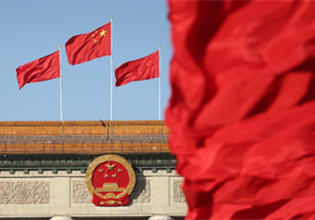Inner Mongolia to improve transportation and tourism services
On April 14, North China's Inner Mongolia autonomous region released the 2025 Action Plan for the Integrated Development of Transportation and Tourism, marking a strategic move to boost high-quality synergy between the region's transport infrastructure and tourism sector.
The plan outlines five major initiatives: enhancing the transport network, building themed scenic roads, upgrading tourist services at expressway service areas, transforming tourism products in rail and air travel, and deepening the integration of transportation and tourism services.
Key infrastructure projects include accelerating the construction of the Taizicheng-Xiliinhot Railway and the Jingpeng-Huamugou section of the G233 Expressway.
An 800-kilometer maintenance initiative will be carried out on national and provincial tourist roads to improve accessibility, convenience, and comfort for travelers. Construction will also begin on 700 km of new scenic roads, focusing on roads around 40 scenic spots. The goal is to ensure that 97 percent of 3A-level and above tourist attractions are connected by Grade III or higher roads, forming efficient and convenient tourist loops.
Aligned with the national strategy for ecological protection and high-quality development along the Yellow River Basin, Inner Mongolia will highlight the river's cultural heritage through three major projects: the Laoniuwan Scenic Route, Wuliangsuhai Loop, and the Wuhai Lake Tourist Road.
Utilizing the border advantages of Hulunbuir and Hinggan League, the region will showcase its unique northern culture through two additional projects: the G331 Border Scenic Route and the Greater Hinggan Mountains Scenic Corridor.
Drawing on its rich grassland and desert resources, Inner Mongolia plans to develop iconic self-driving tourism routes. These include the No 99 Grassland Expressway in Xi Ujimchin Banner, the Tengger Desert Off-road Route, the Northern China Scenic Avenue, and the Maan Mountain Rural Tourism Road.
Inner Mongolia will pilot open service areas at Whistling Dune Bay and Baiyinnao to enhance tourism services at transport hubs. These will be integrated with nearby attractions like the Kubuqi Desert and the Wulanhada Volcano Geopark, expanding offerings such as cultural experiences, leisure activities, educational tours, RV campsites, and outdoor sports to promote regional tourism.
The plan also supports expanding themed rail services, such as ice and snow tours and grassland-forest trains. Direct flights from major cities to key tourist destinations, including Arxan, Hailar, Alshaa League, and Xiliinhot, will be increased.
Local governments are encouraged to explore the development of "low-altitude tourism". Transportation hubs in Hohhot, Ordos, and Hulunbuir will be upgraded to offer more tourism services. Expanded shuttle and public transport lines will connect directly to popular attractions, supporting the growth of tailored buses and chartered travel options.



 Print
Print Mail
Mail





